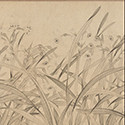|
|
| Show All 42 Results (Text Only) |
|
| Art of the Samurai: Japanese Arms and Armor, 1156–1868 |
|
| The Metropolitan Museum of Art
|
Online presentation of a 2009-2010 exhibition, the "first comprehensive exhibition devoted to the arts of the samurai" and "the first exhibition ever devoted to the subject of Japanese arms and armor conservation." With images of 27 objects.
Go to Museum Resource: https://www.metmuseum.org/exhibitions/listings/2009/art-of-the-samurai/photo-ga... | |
|
|
| Chinese Calligraphy |
|
| The Metropolitan Museum of Art
|
An overview of the development of calligraphy in China: "Calligraphy, or the art of writing, was the visual art form prized above all others in traditional China. The genres of painting and calligraphy emerged simultaneously, sharing identical tools—namely, brush and ink. Yet calligraphy was revered as a fine art long before painting; indeed, it was not until the Song dynasty, when painting became closely allied with calligraphy in aim, form, and technique, that painting shed its status as mere craft and joined the higher ranks of the fine arts. With images of 16 paintings from the Song, Ming, and Qing dynasties and two related objects.
Go to Museum Resource: http://www.metmuseum.org/toah/hd/chcl/hd_chcl.htm | |
|
|
| Chinese Cloisonné |
|
| The Metropolitan Museum of Art
|
A brief introduction to the development of cloisonné in China during the early 14th to 15th century, as well as to the cloisonné technique. With 2 related artworks.
Go to Museum Resource: http://www.metmuseum.org/toah/hd/clos/hd_clos.htm | |
|
|
| Chinese Handscrolls |
|
| The Metropolitan Museum of Art
|
An overview of the Chinese handscroll format: "A significant difference between Eastern and Western painting lies in the format. Unlike Western paintings, which are hung on walls and continuously visible to the eye, most Chinese paintings are not meant to be on constant view but are brought out to be seen only from time to time. This occasional viewing has everything to do with format." With images of 18 paintings from the Tang, Song, Yuan, Ming, and Qing dynasties.
Go to Museum Resource: http://www.metmuseum.org/toah/hd/chhs/hd_chhs.htm | |
|
|
| Chinese Painting |
|
| The Metropolitan Museum of Art
|
An introduction to Chinese painting: "This is the aim of the traditional Chinese painter: to capture not only the outer appearance of a subject but its inner essence as well—its energy, life force, spirit." With images of 19 paintings from the Tang, Song, Yuan, and Ming dynasties.
Go to Museum Resource: http://www.metmuseum.org/toah/hd/chin/hd_chin.htm | |
|
|
| Cultivated Landscapes: Reflections of Nature in Chinese Painting |
|
| The Metropolitan Museum of Art
|
Online presentation of a 2002-2003 exhibition that encompasses "landscapes and garden scenes dating from the Five Dynasties period (907–960) to the late twentieth century" and explores the "manifold uses of natural imagery in Chinese painting as a reflection of human beliefs and emotions." With images of 8 related artworks. See also the exhibition publication.
Go to Museum Resource: https://www.metmuseum.org/exhibitions/listings/2002/cultivated-landscapes | |
|
|
|
| Goryeo Celadon |
|
| The Metropolitan Museum of Art
|
Discusses the development of celadon ceramic production during the Goryeo dynasty (918-1392). With 11 related objects. The term celadon is thought to derive from the name of the hero in a seventeenth-century French pastoral comedy. The color of the character Céladon’s robe evoked, in the minds of Europeans, the distinctive green-glazed ceramics from China, where celadon originated. Some scholars object to such an arbitrary and romanticized Western nomenclature. Yet the ambiguity of the term celadon effectively captures the myriad hues of greens and blues of this ceramic type. During the nearly five centuries of the Goryeo dynasty (918–1392), celadon constituted the main type of ceramics produced on the Korean peninsula.
Go to Museum Resource: http://www.metmuseum.org/toah/hd/cela/hd_cela.htm | |
|
|
|
| Show All 42 Results (Text Only) |









